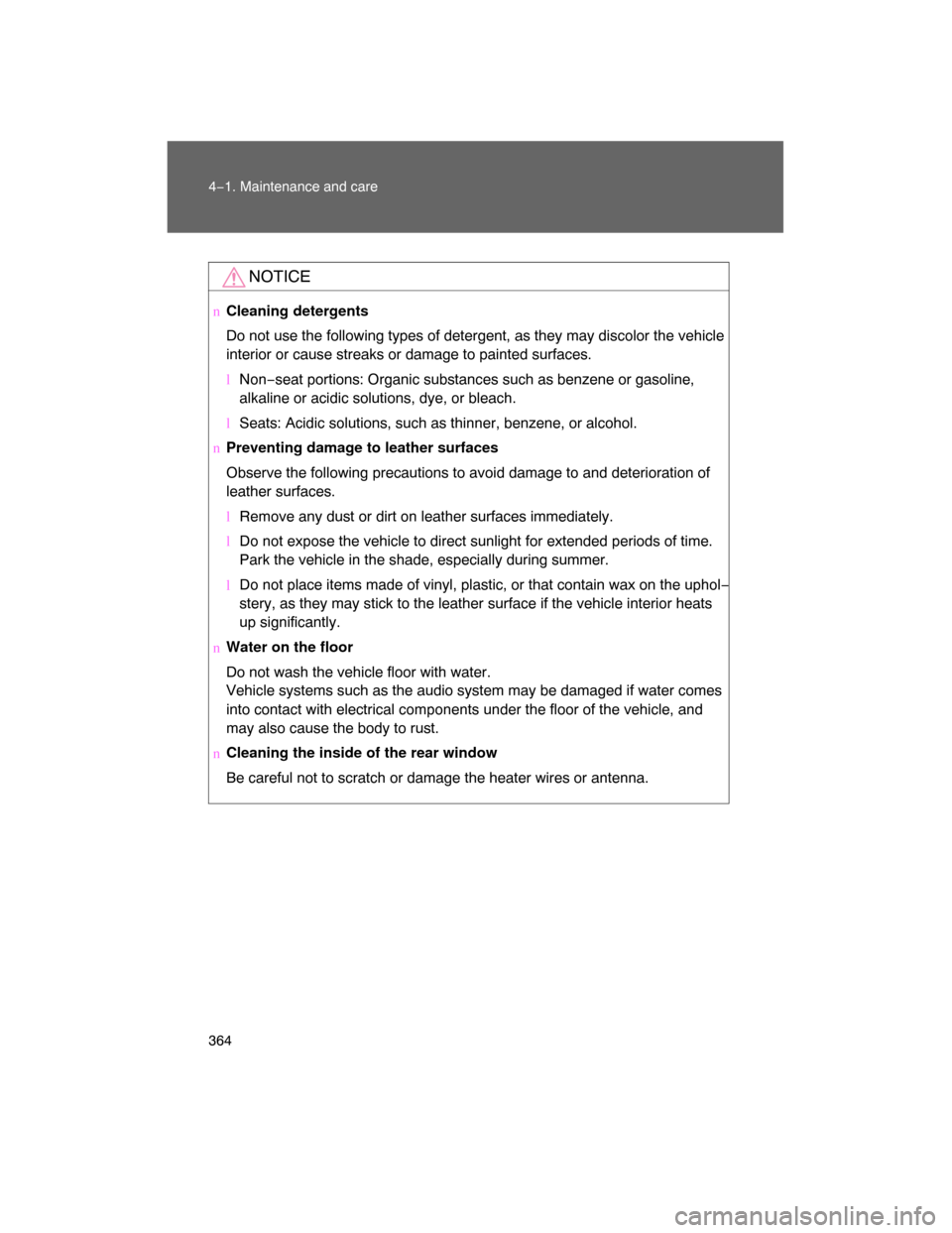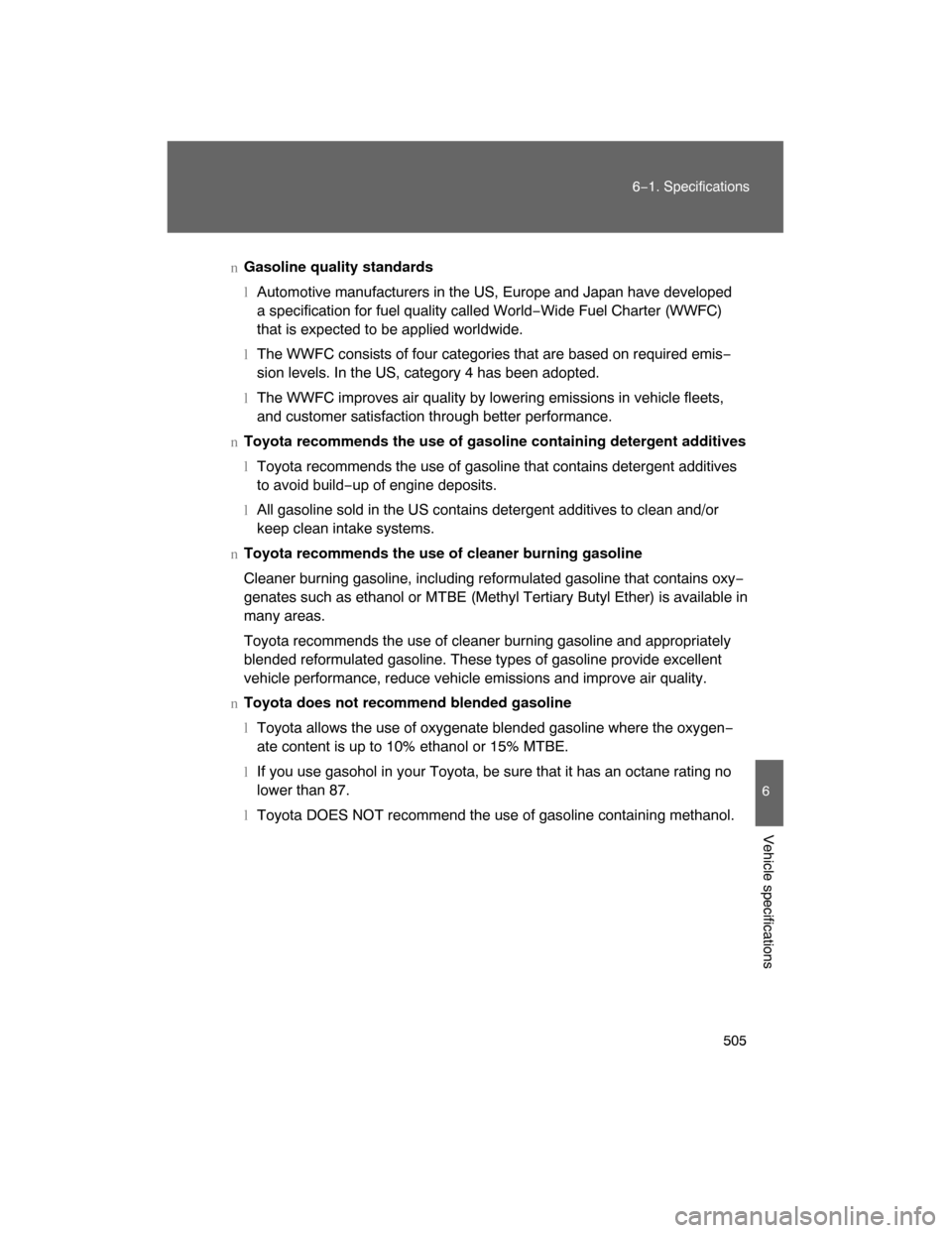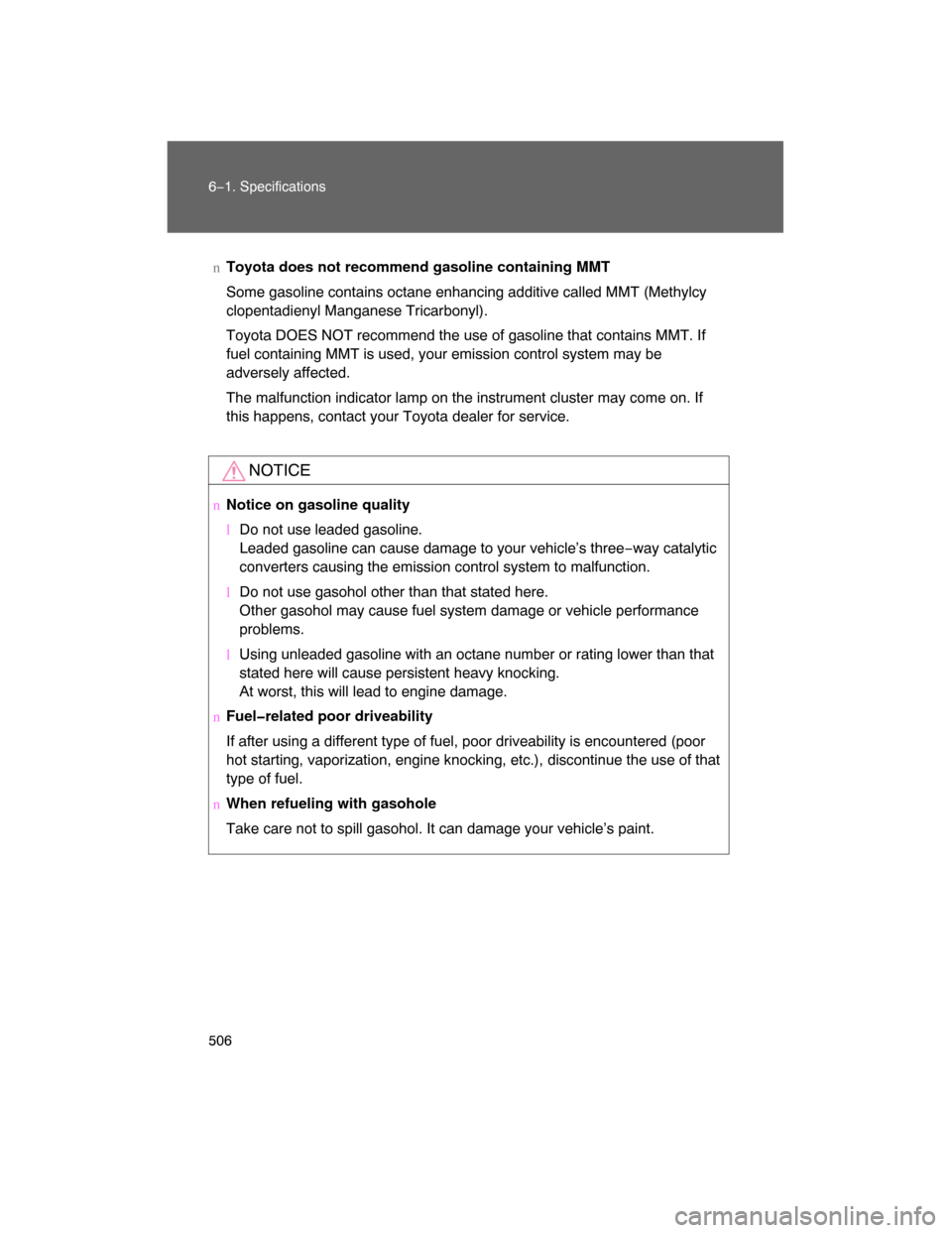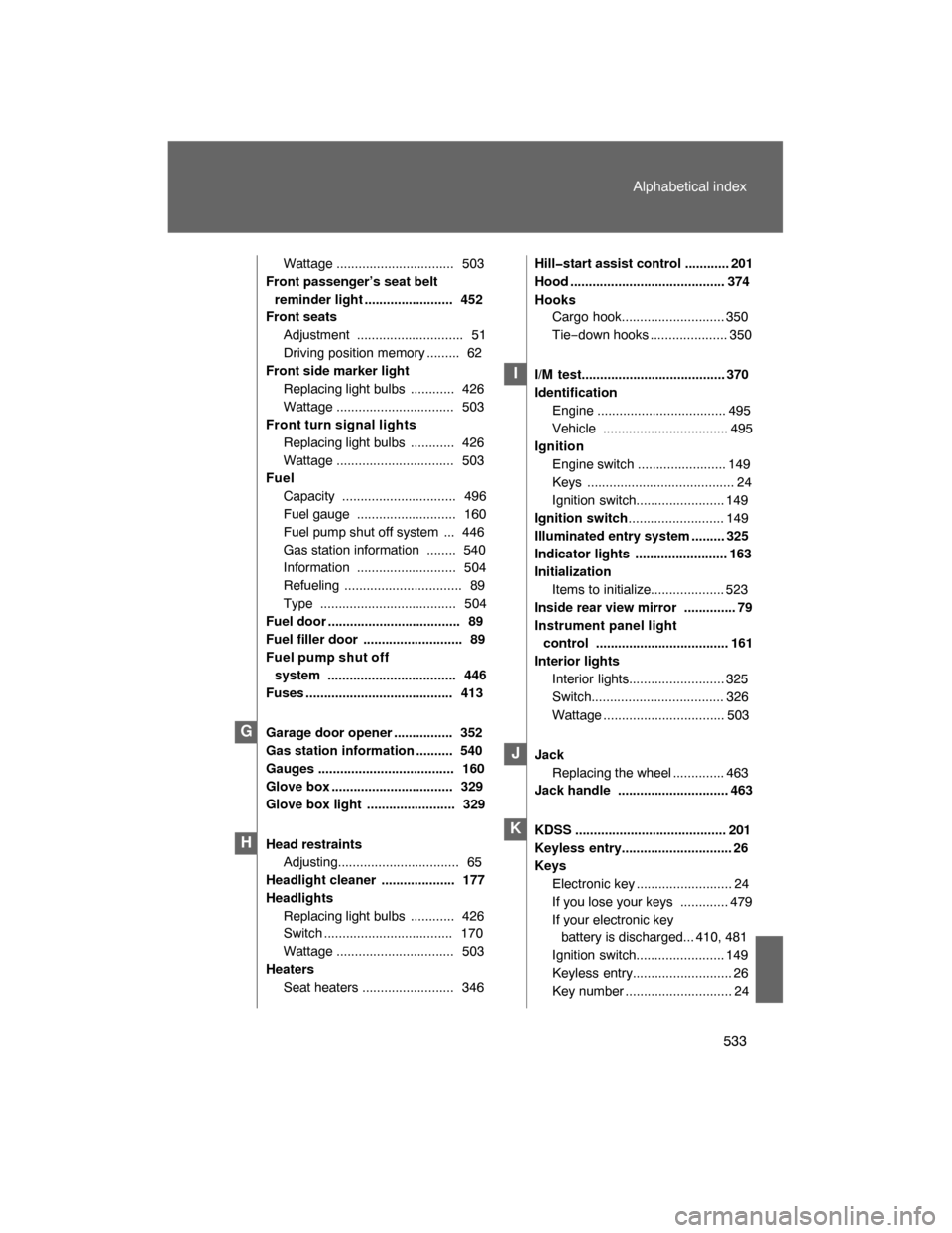Page 89 of 531
90 1−5. Refueling
Closing the fuel tank cap
When replacing the fuel tank
cap, turn it until a clicking sound
is heard.
After releasing your hand, the cap
will turn slightly to the opposite
direction.
nFuel types
Use unleaded gasoline. (87 Octane Rating [Research Octane Number 91] or
higher)
nFuel tank capacity
Approximately 24.6 gal. (93 L, 20.5 Imp. gal.)
Page 104 of 531

105
1−7. Safety information
1
Before driving
Your vehicle is equipped with ADVANCED AIRBAGS designed based
on US motor vehicle safety standards (FMVSS208). The airbag sys−
tem controls airbag deployment po
wer for the driver and front pas−
senger. The driver airbag system consists of the driver seat’s position
sensor etc. The front passenger ’s airbag system consists of the front
passenger occupant classification sensor etc.
The main SRS airbag system components are shown above. The
SRS airbag system is controlled by
the airbag sensor assembly. The
airbag sensor assembly consists of a safing sensor and an airbag
sensor.
In certain types of severe frontal or side impacts, the SRS airbag sys−
tem triggers the airbag inflators. A
chemical reaction in the inflators
quickly fills the airbags with non−toxic gas to help rest rain the motion
of the occupants.
nIf the SRS airbags deploy (inflate)
lBruising and slight abrasions may result from contact with a deploying
(inflating) SRS airbag.
lA loud noise and white powder will be emitted.
lParts of the airbag module (steering wheel hub, airbag cover and inflator)
as well as the front seats, second seats may be hot for several minutes.
The airbag itself may also be hot.
lThe windshield may crack.
Page 359 of 531

364 4−1. Maintenance and care
NOTICE
nCleaning detergents
Do not use the following types of detergent, as they may discolor the vehicle
interior or cause streaks or damage to painted surfaces.
lNon−seat portions: Organic substances such as benzene or gasoline,
alkaline or acidic solutions, dye, or bleach.
lSeats: Acidic solutions, such as thinner, benzene, or alcohol.
nPreventing damage to leather surfaces
Observe the following precautions to avoid damage to and deterioration of
leather surfaces.
lRemove any dust or dirt on leather surfaces immediately.
lDo not expose the vehicle to direct sunlight for extended periods of time.
Park the vehicle in the shade, especially during summer.
lDo not place items made of vinyl, plastic, or that contain wax on the uphol−
stery, as they may stick to the leather surface if the vehicle interior heats
up significantly.
nWater on the floor
Do not wash the vehicle floor with water.
Vehicle systems such as the audio system may be damaged if water comes
into contact with electrical components under the floor of the vehicle, and
may also cause the body to rust.
n
Cleaning the inside of the rear window
Be careful not to scratch or damage the heater wires or antenna.
Page 383 of 531
388 4−3. Do−it−yourself maintenance
nChecking battery condition
Check the battery condition using the indicator color.
Good condition
Charging is necessary.
Have the vehicle inspected by
your Toyota dealer.
Not working properly, have the
battery checked by your Toy−
ota dealer.
ITY43C100
Green
Dark
Clear or light yellow
Type A
Blue
White
Red
Type B
nBefore recharging
When recharging, the battery produces hydrogen gas which is flammable
and explosive. Therefore, before recharging:
lIf recharging with the battery installed on the vehicle, be sure to discon−
nect the ground cable.
lMake sure the power switch on the charger is off when connecting and
disconnecting the charger cables to the battery.
nAfter recharging the battery
The engine may not start. Follow the procedure below to initialize the sys−
tem.
1. Depress the brake pedal with the shift lever in “N”.
2. Open and close any of the doors.
3. Restart the engine.
Page 489 of 531
496 6−1. Specifications
Engine
Fuel
Model3UR−FE
Ty p e
8−cylinder V type, 4−cycle, gasoline
Bore and stroke 3.70 4.02 in. (94.0
102.0 mm)
Displacement 345.6 cu.in. (5663 cm
3)
Valve clearance
(engine cold)
Automatic adjustment
Drive belt tension
Automatic adjustment
Fuel type
Unleaded gasoline only
Octane rating
87 (Research octane number 91) or higher
Fuel tank capacity
24.6 gal. (93 L, 20.5 lmp.gal)
Page 498 of 531

505
6−1. Specifications
6
Vehicle specifications
nGasoline quality standards
lAutomotive manufacturers in the US, Europe and Japan have developed
a specification for fuel quality called World−Wide Fuel Charter (WWFC)
that is expected to be applied worldwide.
lThe WWFC consists of four categories that are based on required emis−
sion levels. In the US, category 4 has been adopted.
lThe WWFC improves air quality by lowering emissions in vehicle fleets,
and customer satisfaction through better performance.
nToyota recommends the use of gasoline containing detergent additives
lToyota recommends the use of gasoline that contains detergent additives
to avoid build−up of engine deposits.
lAll gasoline sold in the US contains detergent additives to clean and/or
keep clean intake systems.
nToyota recommends the use of cleaner burning gasoline
Cleaner burning gasoline, including reformulated gasoline that contains oxy−
genates such as ethanol or MTBE (Methyl Tertiary Butyl Ether) is available in
many areas.
Toyota recommends the use of cleaner burning gasoline and appropriately
blended reformulated gasoline. These types of gasoline provide excellent
vehicle performance, reduce vehicle emissions and improve air quality.
nToyota does not recommend blended gasoline
lToyota allows the use of oxygenate blended gasoline where the oxygen−
ate content is up to 10% ethanol or 15% MTBE.
lIf you use gasohol in your Toyota, be sure that it has an octane rating no
lower than 87.
lToyota DOES NOT recommend the use of gasoline containing methanol.
Page 499 of 531

506 6−1. Specifications
nToyota does not recommend gasoline containing MMT
Some gasoline contains octane enhancing additive called MMT (Methylcy
clopentadienyl Manganese Tricarbonyl).
Toyota DOES NOT recommend the use of gasoline that contains MMT. If
fuel containing MMT is used, your emission control system may be
adversely affected.
The malfunction indicator lamp on the instrument cluster may come on. If
this happens, contact your Toyota dealer for service.
NOTICE
nNotice on gasoline quality
lDo not use leaded gasoline.
Leaded gasoline can cause damage to your vehicle’s three−way catalytic
converters causing the emission control system to malfunction.
lDo not use gasohol other than that stated here.
Other gasohol may cause fuel system damage or vehicle performance
problems.
lUsing unleaded gasoline with an octane number or rating lower than that
stated here will cause persistent heavy knocking.
At worst, this will lead to engine damage.
nFuel�related poor driveability
If after using a different type of fuel, poor driveability is encountered (poor
hot starting, vaporization, engine knocking, etc.), discontinue the use of that
type of fuel.
n
When refueling with gasohole
Take care not to spill gasohol. It can damage your vehicle’s paint.
Page 524 of 531

533
Alphabetical index
Wattage ................................ 503
Front passenger’s seat belt
reminder light ........................ 452
Front seats
Adjustment ............................. 51
Driving position memory ......... 62
Front side marker light
Replacing light bulbs ............ 426
Wattage ................................ 503
Front turn signal lights
Replacing light bulbs ............ 426
Wattage ................................ 503
Fuel
Capacity ............................... 496
Fuel gauge ........................... 160
Fuel pump shut off system ... 446
Gas station information ........ 540
Information ........................... 504
Refueling ................................ 89
Type ..................................... 504
Fuel door .................................... 89
Fuel filler door ........................... 89
Fuel pump shut off
system ................................... 446
Fuses ........................................ 413
Garage door opener ................ 352
Gas station information .......... 540
Gauges ..................................... 160
Glove box ................................. 329
Glove box light ........................ 329
Head restraints
Adjusting................................. 65
Headlight cleaner .................... 177
Headlights
Replacing light bulbs ............ 426
Switch ................................... 170
Wattage ................................ 503
Heaters
Seat heaters ......................... 346Hill�start assist control ............ 201
Hood .......................................... 374
Hooks
Cargo hook............................ 350
Tie−down hooks..................... 350
I/M test....................................... 370
Identification
Engine ................................... 495
Vehicle .................................. 495
Ignition
Engine switch ........................ 149
Keys ........................................ 24
Ignition switch........................ 149
Ignition switch
.......................... 149
Illuminated entry system ......... 325
Indicator lights ......................... 163
Initialization
Items to initialize.................... 523
Inside rear view mirror .............. 79
Instrument panel light
control .................................... 161
Interior lights
Interior lights.......................... 325
Switch.................................... 326
Wattage ................................. 503
Jack
Replacing the wheel .............. 463
Jack handle .............................. 463
KDSS ......................................... 201
Keyless entry.............................. 26
Keys
Electronic key .......................... 24
If you lose your keys ............. 479
If your electronic key
battery is discharged... 410, 481
Ignition switch........................ 149
Keyless entry........................... 26
Key number ............................. 24
G
H
I
J
K